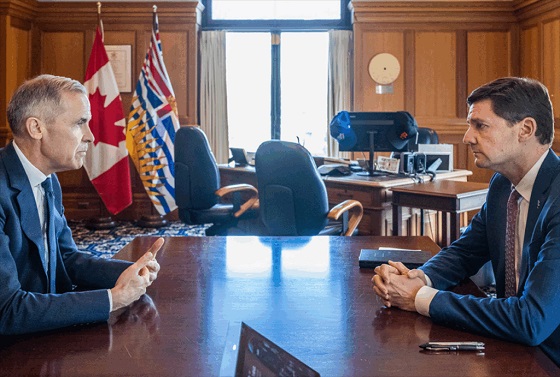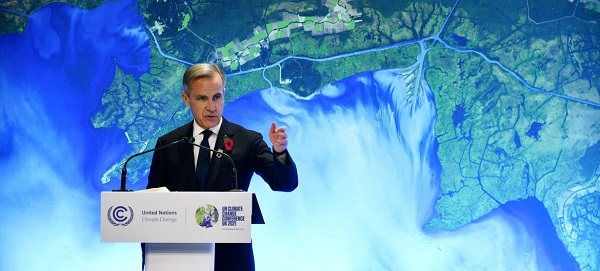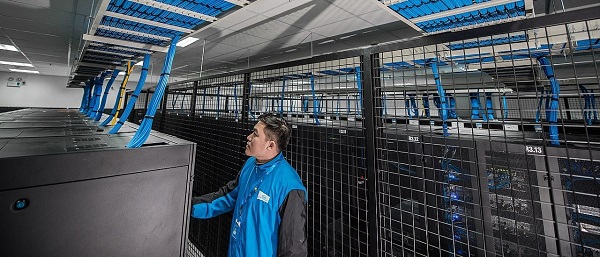Business
ESG Is Collapsing And Net Zero Is Going With It
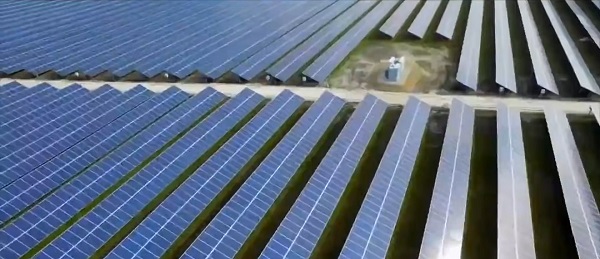

From the Daily Caller News Foundation
By David Blackmon
The chances of achieving the goal of net-zero by 2050 are basically net zero
Just a few years ago, ESG was all the rage in the banking and investing community as globalist governments in the western world focused on a failing attempt to subsidize an energy transition into reality. The strategy was to try to strangle fossil fuel industries by denying them funding for major projects, with major ESG-focused institutional investors like BlackRock and State Street, and big banks like J.P. Morgan and Goldman Sachs leveraging their control of trillions of dollars in capital to lead the cause.
But a funny thing happened on the way to a green Nirvana: It turned out that the chosen rent-seeking industries — wind, solar and electric vehicles — are not the nifty plug-and-play solutions they had been cracked up to be.
Even worse, the advancement of new technologies and increased mining of cryptocurrencies created enormous new demand for electricity, resulting in heavy new demand for finding new sources of fossil fuels to keep the grid running and people moving around in reliable cars.
In other words, reality butted into the green narrative, collapsing the foundations of the ESG movement. The laws of physics, thermodynamics and unanticipated consequences remain laws, not mere suggestions.
Making matters worse for the ESG giants, Texas and other states passed laws disallowing any of these firms who use ESG principles to discriminate against their important oil, gas and coal industries from investing in massive state-governed funds. BlackRock and others were hit with sanctions by Texas in 2023. More recently, Texas and 10 other states sued Blackrock and other big investment houses for allegedly violating anti-trust laws.
As the foundations of the ESG movement collapse, so are some of the institutions that sprang up around it. The United Nations created one such institution, the “Net Zero Asset Managers Initiative,” whose participants maintain pledges to reach net-zero emissions by 2050 and adhere to detailed plans to reach that goal.
The problem with that is there is now a growing consensus that a) the forced march to a green energy transition isn’t working and worse, that it can’t work, and b) the chances of achieving the goal of net-zero by 2050 are basically net zero. There is also a rising consensus among energy companies of a pressing need to prioritize matters of energy security over nebulous emissions reduction goals that most often constitute poor deployments of capital. Even as the Biden administration has ramped up regulations and subsidies to try to force its transition, big players like ExxonMobil, Chevron, BP, and Shell have all redirected larger percentages of their capital budgets away from investments in carbon reduction projects back into their core oil-and-gas businesses.
The result of this confluence of factors and events has been a recent rush by big U.S. banks and investment houses away from this UN-run alliance. In just the last two weeks, the parade away from net zero was led by major banks like Goldman Sachs, Morgan Stanley, Citigroup, Bank of America, Wells Fargo, and, most recently, JP Morgan. On Thursday, the New York Post reported that both BlackRock and State Street, a pair of investment firms who control trillions of investor dollars (BlackRock alone controls more than $10 trillion) are on the brink of joining the flood away from this increasingly toxic philosophy.
In June, 2023, BlackRock CEO Larry Fink made big news when told an audience at the Aspen Ideas Festival in Aspen, Colorado that he is “ashamed of being part of this [ESG] conversation.” He almost immediately backed away from that comment, restating his dedication to what he called “conscientious capitalism.” The takeaway for most observers was that Fink might stop using the term ESG in his internal and external communications but would keep right on engaging in his discriminatory practices while using a different narrative to talk about it.
But this week’s news about BlackRock and the other big firms feels different. Much has taken place in the energy space over the last 18 months, none of it positive for the energy transition or the net-zero fantasy. Perhaps all these big banks and investment funds are awakening to the reality that it will take far more than devising a new way of talking about the same old nonsense concepts to repair the damage that has already been done to the world’s energy system.
David Blackmon is an energy writer and consultant based in Texas. He spent 40 years in the oil and gas business, where he specialized in public policy and communications.
Business
The UN Pushing Carbon Taxes, Punishing Prosperity, And Promoting Poverty


From the Daily Caller News Foundation
Unelected regulators and bureaucrats from the United Nations have pushed for crushing the global economy in the name of saving the planet.
In October, the International Maritime Organization (IMO), a specialized agency within the U.N., proposed a carbon tax in order to slash the emissions of shipping vessels. This comes after the IMO’s April 2025 decision to adopt net-zero standards for global shipping.
Had the IMO agreed to the regulation, it would have been the first global tax on greenhouse gas emissions. Thankfully, the United States was able to effectively shut down those proposals; however, while these regulations have been temporarily halted, the erroneous ideas behind them continue to grow in support.
Proponents of carbon taxes generally argue that since climate change is an existential threat to human existence, drastic measures must be taken in all aspects of our lives to address the projected costs. People should eat less meat and use public transportation more often. In the political arena, they should vote out so-called “climate deniers.” In the economic sphere, carbon taxes are offered as a technocratic quick fix to carbon emissions. Is any of this worth it? Or are the benefits greater than the costs? In the case of climate change, the answer is no.
Carbon taxes are not a matter of scientific fact. As with all models, the assumptions drive the analysis. In the case of carbon taxes, the time horizon selected plays a major role in the outcome. So, too, does the discount rate and the specific integrated assessment models.
In other words, “Two economists can give vastly different estimates of the social cost of carbon, even if they agree on the objective facts underlying the analysis.” If the assumptions are subjective, as they are in carbon taxes, then they are not scientific facts. As I’ve pointed out, “carbon pricing models are as much political constructs as they are economic tools.” One must also ask whether carbon taxes will remain unchanged or gradually increase over time to advance other political agendas. In this proposal, the answer is that it increases over time.
Additionally, since these models are driven by assumptions, one would be right in asking who gets to impose these taxes? Of course, those would be the unelected bureaucrats at the IMO. No American who would be subject to these taxes ever voted for the people attempting to create the “world’s first global carbon tax.” It brings to mind the phrase “no taxation without representation.”
In an ironic twist, imposing carbon taxes on global shipping might actually be one of the worst ways to slash emissions, given the enormous gains from trade. Simply put, trade makes the world grow rich. Not just wealthy nations like those in the West, but every nation, even the most poor, grows richer. In wealthy countries, trade can help address climate change by enabling adaptation and innovation. For poorer countries, material gains from trade can help prevent their populations from starving and also help them advance along the environmental Kuznets curve.
In other words, the advantages of trade can, over time, make a country go from being so poor that a high level of air pollution is necessary for its survival to being rich enough to afford reducing or eliminating pollution. Carbon taxes, if sufficiently high, can prevent or significantly delay these processes, thereby undermining their supposed purpose. Not to mention, as of today, maritime shipping accounts for only about 3% of total global emissions.
The same ingenuity that brought us modern shipping will continue to power the global economy and fund growth and innovation, if we let it. The world does not need a layer of global bureaucracy for the sake of virtue signaling. What it needs is an understanding of both economics and human progress.
History shows that prosperity, innovation, and free trade are what make societies cleaner, healthier, and richer. Our choice is not between saving the planet and saving the economy; it is between free societies and free markets or surrendering responsibility to unelected international regulators and busybodies. The former has lifted billions out of poverty, and the latter threatens to drag us all backwards.
Samuel Peterson is a Research Fellow at the Institute for Energy Research.
Agriculture
Federal cabinet calls for Canadian bank used primarily by white farmers to be more diverse

From LifeSiteNews
A finance department review suggested women, youth, Indigenous, LGBTQ, Black and racialized entrepreneurs are underserved by Farm Credit Canada.
The Cabinet of Prime Minister Mark Carney said in a note that a Canadian Crown bank mostly used by farmers is too “white” and not diverse enough in its lending to “traditionally underrepresented groups” such as LGBT minorities.
Farm Credit Canada Regina, in Saskatchewan, is used by thousands of farmers, yet federal cabinet overseers claim its loan portfolio needs greater diversity.
The finance department note, which aims to make amendments to the Farm Credit Canada Act, claims that agriculture is “predominantly older white men.”
Proposed changes to the Act mean the government will mandate “regular legislative reviews to ensure alignment with the needs of the agriculture and agri-food sector.”
“Farm operators are predominantly older white men and farm families tend to have higher average incomes compared to all Canadians,” the note reads.
“Traditionally underrepresented groups such as women, youth, Indigenous, LGBTQ, and Black and racialized entrepreneurs may particularly benefit from regular legislative reviews to better enable Farm Credit Canada to align its activities with their specific needs.”
The text includes no legal amendment, and the finance department did not say why it was brought forward or who asked for the changes.
Canadian census data shows that there are only 590,710 farmers and their families, a number that keeps going down. The average farmer is a 55-year-old male and predominantly Christian, either Catholic or from the United Church.
Data shows that 6.9 percent of farmers are immigrants, with about 3.7 percent being “from racialized groups.”
National census data from 2021 indicates that about four percent of Canadians say they are LGBT; however, those who are farmers is not stated.
Historically, most farmers in Canada are multi-generational descendants of Christian/Catholic Europeans who came to Canada in the mid to late 1800s, mainly from the United Kingdom, Ireland, Ukraine, Russia, Italy, Poland, the Netherlands, Germany, and France.
-

 Alberta1 day ago
Alberta1 day agoAlberta Offers Enormous Advantages for AI Data Centres
-

 Daily Caller16 hours ago
Daily Caller16 hours ago‘Holy Sh*t!’: Podcaster Aghast As Charlie Kirk’s Security Leader Reads Texts He Allegedly Sent University Police
-

 Alberta1 day ago
Alberta1 day agoNational Crisis Approaching Due To The Carney Government’s Centrally Planned Green Economy
-

 Alberta1 day ago
Alberta1 day agoCalgary mayor should retain ‘blanket rezoning’ for sake of Calgarian families
-

 Great Reset17 hours ago
Great Reset17 hours agoCanadian government forcing doctors to promote euthanasia to patients: report
-
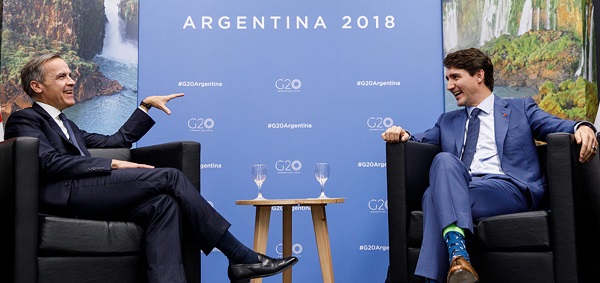
 Carbon Tax9 hours ago
Carbon Tax9 hours agoCarney fails to undo Trudeau’s devastating energy policies
-

 Alberta17 hours ago
Alberta17 hours agoSylvan Lake football coach fired for opposing transgender ideology elected to town council
-

 Agriculture17 hours ago
Agriculture17 hours agoFederal cabinet calls for Canadian bank used primarily by white farmers to be more diverse

